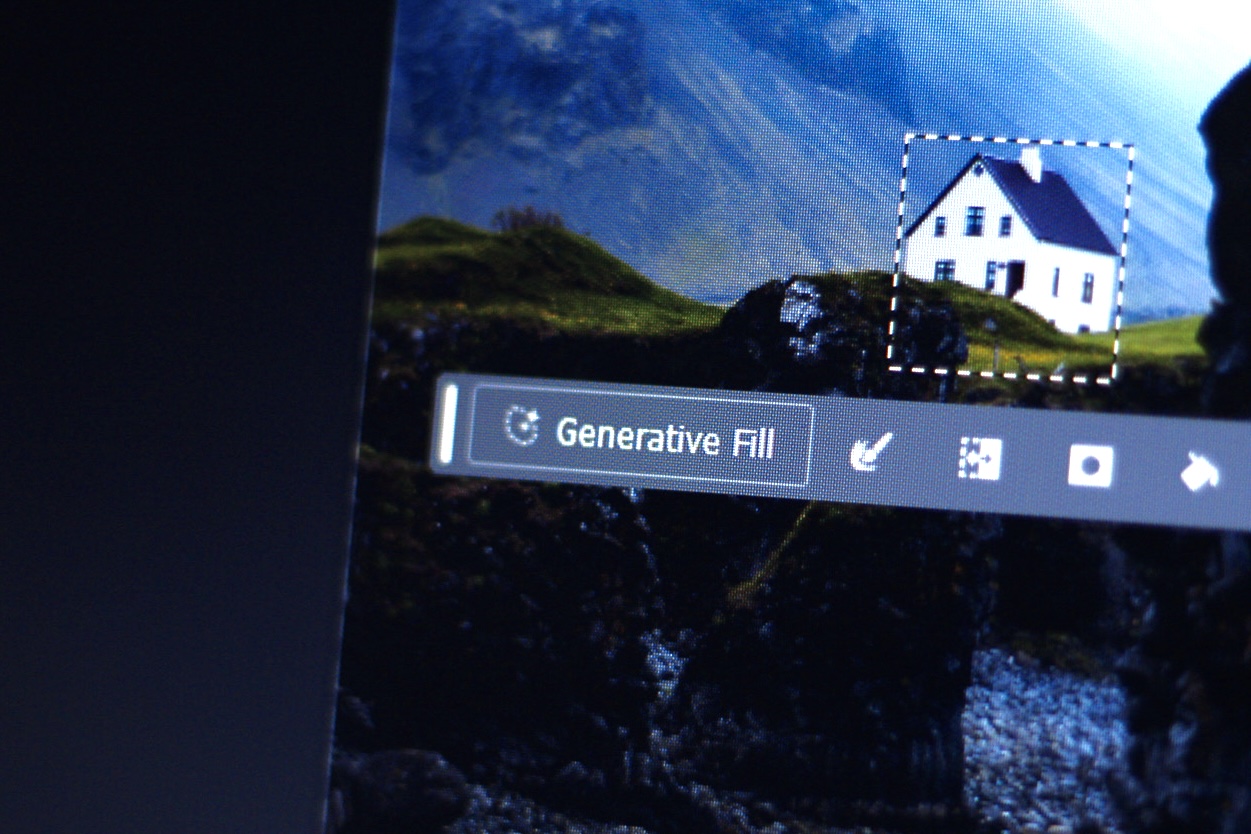Is AI replacing designers?
Artificial intelligence in the creative industry and how it enhances the work of designers and people.
Adobe Firefly, one of Adobe’s newest inventions, is finally here. Marketed as one of the best tools for creators, it’s able to turn simple texts into generative pictures, edit your work, and apply textures and designs. Not only that, but this powerful companion is also available for only C$4.99 a month and works with almost every single Adobe application. Need to choose colours for your brand? No problem, Firefly can select colours from your mood board. Want to see what you look like as an alien? No problem, Firefly can create you as a cartoon character. We now have the power of a designer at our fingertips. With just a few words, we can generate any design we want, without the expertise or even spending the time to make them.
This is causing an outrage amongst designers. All those years in art school seemingly rendered pointless with the invention of generative artificial intelligence (AI)—and the sentiment is echoed among creative communities. It all started with the writers and the ability of AI to generate stories. Then it started generating pictures trending on social media. And now, we are in a time where AI can generate about anything you can imagine. While some creators enjoy the convenience and possibilities AI brings, most still frown upon the use of such tools and consider them second-rate and inauthentic.
AI isn’t a new concept, nor is the use of AI in creative fields such as design. It first came to the world as a branch of computer science, in which people tried to engineer machines that could mimic human cognitive functions and solve problems without the need for constant supervision. Flash forward to today, Adobe has been using AI for years in their applications. By automating and simplifying processes, designers save time on tedious work and can spend more energy on creating designs and innovating. A simple auto selection instead of selecting items manually is just one of the many tools Adobe improved using AI and AI learning.
However, the appearance of generative AI is new. These are artificial intelligences that can generate and create on their own art based on a database. ChatGPT, for example, is well loved among students and many others in the academic field for its ability to research, analyze, and compile information. This powerful tool can sift through databases and generate text and summaries in the style or format the user needs. Other generative AI, such as MidJourney, started surfacing on social media, inspiring trends and prompting the public to try out the power of generative AIs and their ability to create designs and realistic photographs. Everyone can now transform themselves into anime characters, take ’90s high school photos, or even picture themselves in their favorite cartoons.
AI is also great for designers who value accessibility and problem solving designs. User interface designers who busy themselves with creating design-based solutions may use AI tools to help generate solutions that are specific to their clients based on their needs, pain points, and preferences. Asking the AI to help integrate accessibility-specific parameters ensures that the design is consistently accessible and frees up the designer’s time in weeding out the problems that need fixing.
There’s no wonder why the creative industry has mixed feelings about this tool. On the surface, it sparks the conversation of whether AI will take our jobs. That was my first reaction to it as well. When I found out about Adobe Firefly, I couldn’t help but think: “I’m spending so much time creating designs, how can I compete with mere programs that can create even better designs? Who will hire me to design their products?”
But curiosity got the better of me. I had to come up with a quick logo for a project I had and decided to see if I could take some inspiration from ChatGPT. I keyed in some words, described the situation, and provided information I thought was necessary. What it provided was a detailed paragraph on how I could go about designing the logo by showing me inspiration I could use and the different approaches I could take. And the results were amazing. After a few tweaks here and there, it took me about two hours to create something that I would otherwise spend a whole day on. Instead of spending the time brainstorming how to start the design, I poured my energy into creating variations of the logo, explaining the design, and suggesting changes. My client was more than happy about it.
The key here is to use AI as a tool. Think of it as a paint brush and nothing more or less than that. It can certainly do more than any tool we have now, but it creates endless opportunities and frees up our time to focus on things that matter. As much as AI is a powerful tool, there needs to be an idea behind the generative words for it to work well. As I toyed around with wording and coming up with weird, vague ideas, these generative AI tools seem to work the best when enough information is given. Random and sparse words would only generate work that feels “empty.” With no clear direction or creativity behind the prompts, the photos and designs generated were bland at best.
A lot of designers who use AI share the same view: AI is a powerful tool that we can use in the creative process to save time. However, it isn’t enough to create a completely new design. Just as a paint brush cannot paint on its own, AI cannot ideate and create innovative designs that designers can.
Stepping into the new world as this technology continues to grow is a fascinating thing. Our capabilities to create and ideate have grown exponentially with the help of AI, to the point where we sometimes wonder if one day our competition will be the very tools that help us. Generative AI is only going to get better from here, and the use of it will be more and more commonplace with our devices and programs introducing AI into their systems. But the underlying concept stays the same. These AIs are here to help with tasks, freeing up our time and energy for higher-level decisions.
Whether simple tools such as auto selection or removing elements in your photograph to complex tasks such as analyzing and creating a style guide from mood boards, there is still a need for human input to help guide the AI tool and generate the result we want.
The question we should ask ourselves isn’t how we can compete in the world of AI, but rather, how can we use AI to help with our work?
Features Editor (Volume 50) — Louis graduated from UTM with a Bachelor of Science double majoring in Psychology and Professional Writing and Communication. He is currently in the field of UX/UI design, conducting research on how to improve user experience in apps and websites, designing websites for companies that are looking to branch online. As the Features Editor for Volume 50, Louis wants to bring the experience of reading enjoyable and informative for everyone. He hopes to showcase student voices and empower them through editing. When Louis is not at his computer designing websites or writing, he is opening Pokémon card packs chasing the Charizard or at the gym training his mind and body.


